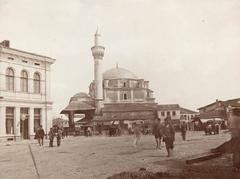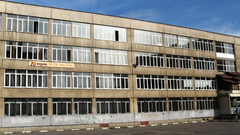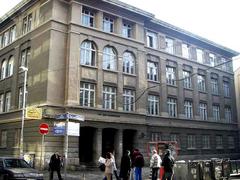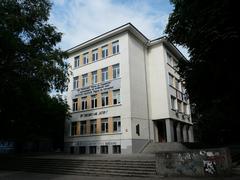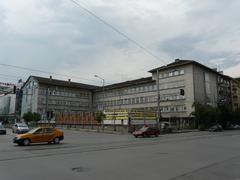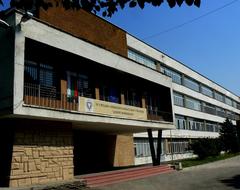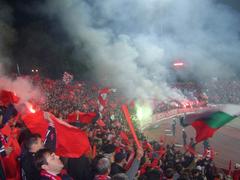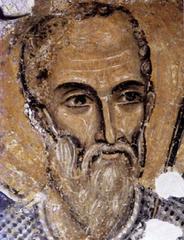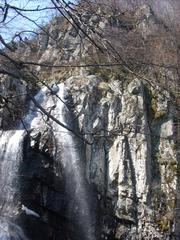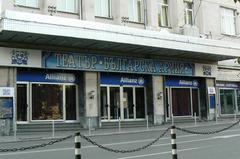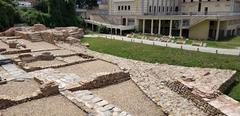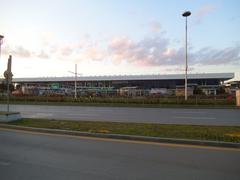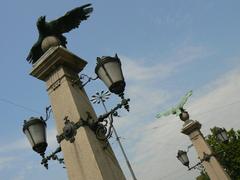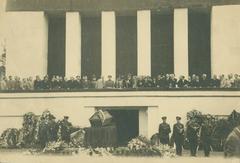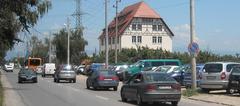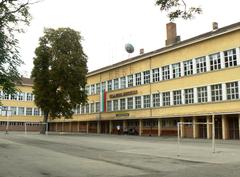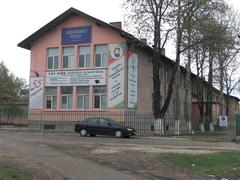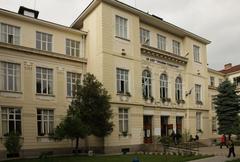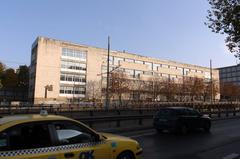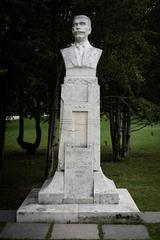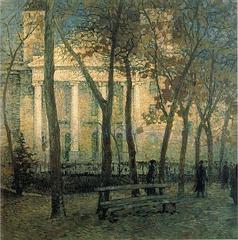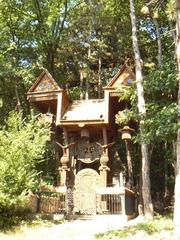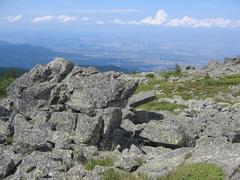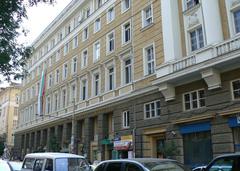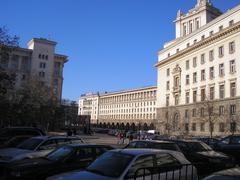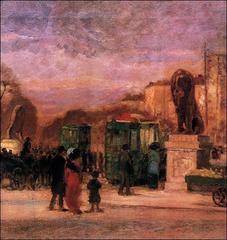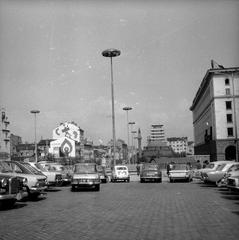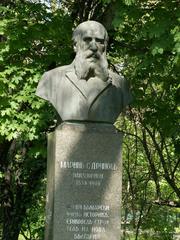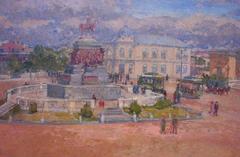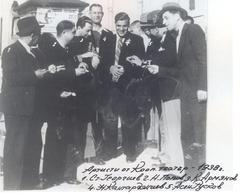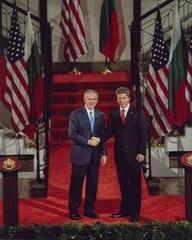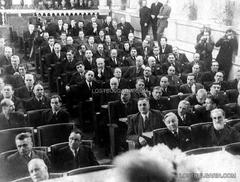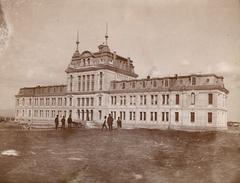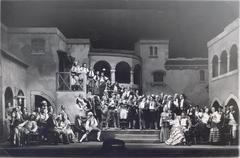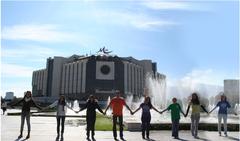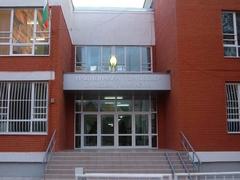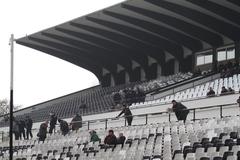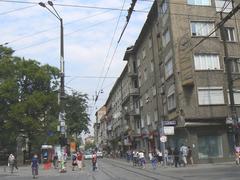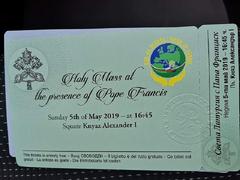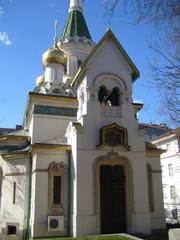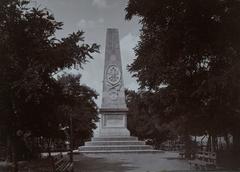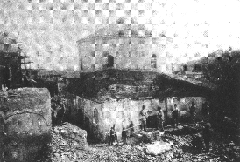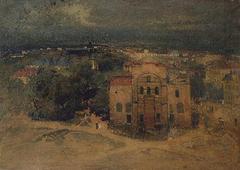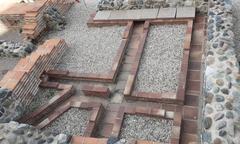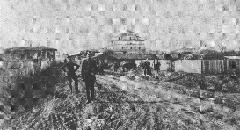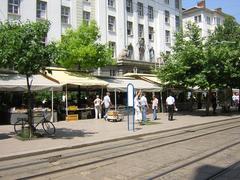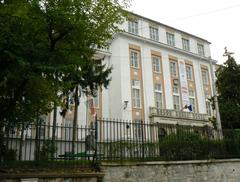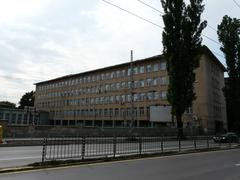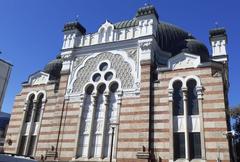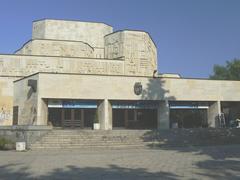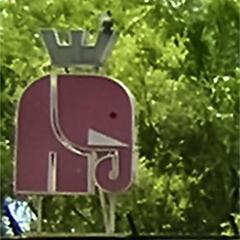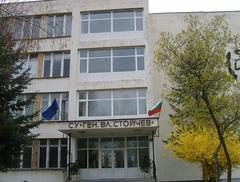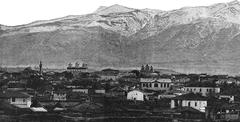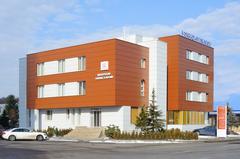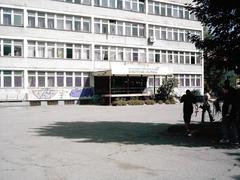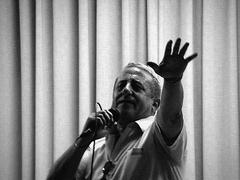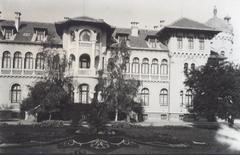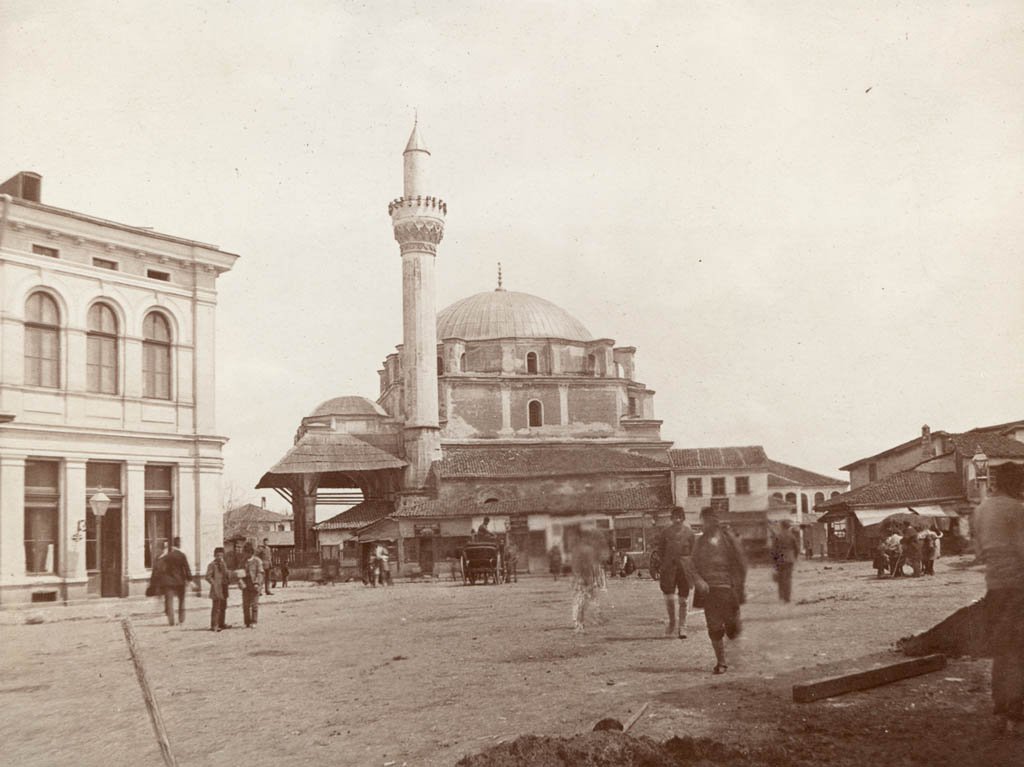
Banya Bashi Mosque Visiting Hours, Tickets, and Sofia Historical Sites Guide
Date: 14/06/2025
Introduction
Centrally located in Sofia, Bulgaria, the Banya Bashi Mosque is a striking monument of Ottoman heritage and a living center for the city’s Muslim community. Built in 1566 by the eminent Ottoman architect Mimar Sinan, this mosque uniquely integrates Sofia’s ancient spa culture, as it is constructed atop natural thermal springs. As the only functioning mosque in Sofia, Banya Bashi is both a spiritual sanctuary and a symbol of the city’s multicultural identity. This detailed guide provides essential information for visitors, including historical context, architectural highlights, practical visiting details, and tips for exploring nearby Sofia historical sites. (Balkan Kaleidoscope, Sofia Guide, Audiala)
Table of Contents
- Introduction
- Historical Background
- Architectural Features
- Religious and Cultural Significance
- Visiting Information
- Accessibility and Facilities
- Nearby Attractions
- Practical Tips for Visitors
- Frequently Asked Questions (FAQ)
- Conclusion
- References
Historical Background
Banya Bashi Mosque, also known as the Seyfullah Efendi Mosque, was completed in 1566 during the height of Ottoman rule in Bulgaria. The name “Banya Bashi” means “many baths,” referencing the thermal mineral springs that flow beneath the mosque—a nod to both the Ottoman tradition of building communal spaces near water and Sofia’s status as an ancient spa hub. Under Ottoman rule (1382–1878), Sofia flourished as a vital administrative and cultural center, and the mosque is the last active remnant of the dozens built during that era.
The mosque survived periods of neglect and political change, notably enduring religious repression during the communist era. It remains a testament to religious resilience and cultural continuity in Bulgaria. (bulgariarelocation.org)
Architectural Features
Exterior
Designed by Mimar Sinan, the mosque exemplifies classical Ottoman architecture. It features a cubic stone-and-brick base crowned with a 15-meter-wide central dome—one of the largest of its kind in Bulgaria. The slender minaret punctuates Sofia’s skyline and continues to serve as the platform for the call to prayer, now delivered via loudspeaker. Smaller subsidiary domes and a modest portico complete the exterior, while steam from the underlying springs is often visible near the foundations, symbolizing the site’s unique connection to water. (Spotting History)
Interior
The prayer hall, accommodating up to 700 worshippers, is bathed in natural light from arched windows. The interior is adorned with beautiful Arabic calligraphy, intricate geometric and floral patterns, and vibrant Iznik tiles. The mihrab (prayer niche) and minbar (pulpit) are finely crafted, and richly patterned carpets enhance the serene atmosphere. Islamic art’s emphasis on abstraction is evident in the lack of human figures, focusing instead on sacred texts and motifs. (Sofia Guide)
Unique Features
- Thermal Springs: The mosque’s foundation is directly over natural hot springs, and the sight of rising steam is a unique visual element.
- Adjacent Hammam Ruins: Remnants of an Ottoman bathhouse nearby further highlight the site’s historical association with water and purification.
Religious and Cultural Significance
Banya Bashi Mosque is the main place of worship for Sofia’s Muslim population, including Turkish, Pomak, and Roma communities. It is administered by the Chief Mufti’s Office, which organizes daily prayers, Friday Jumu’ah, Ramadan, and Eid celebrations. The mosque is also a hub for Quranic classes, educational programs, and community events, maintaining its vital societal role.
The mosque’s location within Sofia’s “Square of Tolerance”—near the Sofia Synagogue and St. Nedelya Church—underscores the city’s tradition of religious coexistence. It actively promotes interfaith dialogue and is a key stop for cultural tourism. (wanderlog.com)
Visiting Information
Hours
- Open: Daily, 9:00 AM – 6:00 PM (outside prayer times)
- Closed: During prayers, especially Friday Jumu’ah and Islamic holidays
- Tip: Confirm hours before your visit, as they may shift during religious observances or special events. (Audiala)
Admission
- Entry: Free for all visitors. Donations welcome for upkeep.
Dress Code & Etiquette
- Required: Modest clothing covering arms and legs. Women should cover their heads with a scarf (bring your own if possible). Shoes must be removed before entering the prayer hall.
- Photography: Permitted outside prayer times, but always ask permission, especially if worshippers are present.
- Behavior: Maintain a quiet, respectful demeanor at all times.
Location & Transport
- Address: 14 Maria Luiza Blvd., Sofia, Bulgaria
- Closest Metro: Serdika station
- Accessible by: Metro, trams, buses, and taxis
Accessibility and Facilities
- Wheelchair Access: Ramps are available at the entrance; some areas may remain challenging due to uneven surfaces.
- Restrooms: Basic facilities, primarily for worshippers.
- Additional Amenities: No café or gift shop on site, but many restaurants and shops are nearby.
Nearby Attractions
Banya Bashi Mosque is ideally located for exploring Sofia’s historical and cultural landmarks:
- Sofia Synagogue: One of Europe’s largest synagogues, symbolizing religious diversity.
- St. Nedelya Church: Noted for its architecture and central role in Orthodox Christian life.
- Central Market Hall: A bustling market for local cuisine and crafts.
- Serdica Archaeological Complex: Ancient Roman ruins beneath modern Sofia.
- Alexander Nevsky Cathedral: Bulgaria’s iconic Orthodox cathedral.
Practical Tips for Visitors
- Wear shoes that are easy to remove.
- Visit early mornings or late afternoons on weekdays for a quieter experience.
- Always ask before taking photos inside the mosque.
- Avoid discussing sensitive topics unless invited.
- Donations can be made in designated boxes inside the mosque.
- English is widely spoken, but learning a few basic Bulgarian phrases is appreciated.
Frequently Asked Questions (FAQ)
Q: What are the Banya Bashi Mosque visiting hours?
A: Generally open from 9:00 AM to 6:00 PM, outside of prayer times. Hours may vary; check ahead.
Q: Is there a ticket or entrance fee?
A: No, entry is free. Donations are welcome.
Q: Are guided tours available?
A: Not officially, but many local tour operators include the mosque in their itineraries.
Q: What is the dress code?
A: Modest dress required. Women should cover their heads.
Q: Is the mosque accessible for visitors with disabilities?
A: There is ramp access, but some areas may be less accessible due to steps or uneven ground.
Q: Is photography allowed?
A: Yes, except during prayers or if worshippers are present—always ask before taking photos.
Conclusion
Banya Bashi Mosque stands as a vibrant testament to Sofia’s Ottoman past and its enduring tradition of religious and cultural diversity. With its majestic architecture, unique setting above thermal springs, and welcoming atmosphere, it is an essential stop for anyone interested in history, architecture, or multicultural heritage. Plan your visit to coincide with the mosque’s open hours, observe respectful etiquette, and explore the rich tapestry of surrounding historical sites for a truly enriching experience.
For up-to-date visitor information and insider travel advice, download the Audiala app and check out related articles on Sofia’s most fascinating historical sites.
References and Further Reading
- Balkan Kaleidoscope
- Sofia Guide
- Audiala
- Bulgaria Relocation
- Spotting History
- Wikipedia
- The World Was Here First
- wanderlog.com
